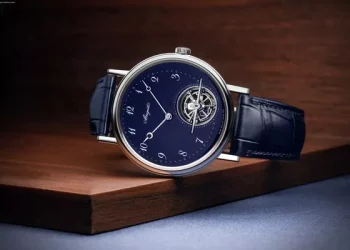Rolex, a brand synonymous with luxury and precision, has been producing high-quality timepieces for over a century. One of the most frequently asked questions from Rolex owners is, “Do I have to wind my Rolex every day?” The short answer is no, but let’s take a deeper dive into this topic and debunk some common myths.
Understanding Automatic Movements
Rolex watches are equipped with automatic movements, also known as self-winding movements. These movements use the natural motion of the wearer’s wrist to power the watch. As the wrist moves throughout the day, a small rotor inside the watch rotates, which then winds the mainspring that powers the watch. This movement can store energy for up to 48 hours or more, depending on the specific model.
The Power Reserve Indicator
If you’re unsure how long your Rolex will last after winding, check the power reserve indicator. Some models, such as the Submariner, have a power reserve indicator on the dial. This feature displays the remaining power reserve, allowing the wearer to know when it’s time to wind their watch.
The Importance of Regular Wear
While automatic movements are designed to self-wind, they still require regular wear to keep accurate time. If a Rolex is left unworn for an extended period, the movement can slow down or stop entirely. This can lead to inaccurate timekeeping and potential damage to the mechanism.
Regular wear not only keeps the watch running smoothly, but it also maintains the aesthetic value. A Rolex is a piece of jewelry, and like all jewelry, it should be worn and enjoyed. The oils from human skin and the environment help preserve the metal and prevent discoloration.
When to Wind Your Rolex
Although Rolex watches are designed to self-wind, there are instances when a manual wind is necessary. For example, if a Rolex has been left unworn for a few days or more, it may need manual winding to restart the movement. Additionally, if the power reserve indicator shows low power remaining, winding the watch will ensure accurate timekeeping.
It’s important to note that over-winding a Rolex can cause damage to the movement. If you’re unsure how much to wind your watch, stop when you feel resistance and avoid forcing the crown. Over time, you’ll become familiar with how much winding is necessary for your specific model.
The Benefits of Regular Servicing
To ensure your Rolex continues to keep accurate time and function correctly, regular servicing is recommended. Rolex suggests servicing every ten years, but this may vary depending on how often the watch is worn and the environment in which it’s worn.
During servicing, a professional watchmaker will disassemble the watch, clean each component, and inspect for any wear or damage. They will replace any worn parts and reassemble the watch, lubricating the movement for optimal performance.
Regular servicing not only helps maintain accuracy, but it also helps prevent potential damage to the mechanism. A professional can detect any issues before they become major problems, saving the owner from costly repairs.
In Conclusion
In summary, while Rolex watches are designed to self-wind, regular wear is necessary to maintain accuracy and preserve the aesthetic value. Checking the power reserve indicator can help gauge when a manual wind is necessary, but over-winding should be avoided to prevent damage to the movement.
Regular servicing is also recommended to ensure the watch continues to function correctly and prevent potential damage. By following these guidelines, a Rolex owner can enjoy their timepiece for years to come.
Related topics:





























